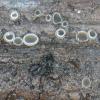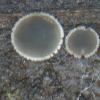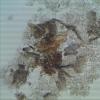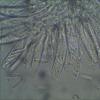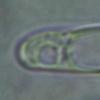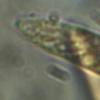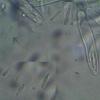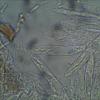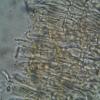
19-02-2012 17:12
 Neven Matocec
Neven Matocec
Hi all!Could anyone help me with these three artic

17-02-2012 17:41
Hi to all:I need some help for to identify these v

16-02-2012 15:42
 Bernard Declercq
Bernard Declercq
Hello everybody,Who can help me with a copy of fol

13-02-2012 08:28
 Alex Akulov
Alex Akulov
Dear Friends Can you help me with identification

10-12-2011 09:59
 Neven Matocec
Neven Matocec
Dear AscoFrance members,I am writing the chapter o

10-02-2012 21:38
 Yatsiuk Iryna
Yatsiuk Iryna
Now I make "a little revision" of old specimens. S
Pyrenopeziza s/ Cirsium palustre.
Luc Bailly,
08-02-2012 18:25
Cela fair plusieurs fois que je ne parviens pas à mettre de nom là-dessus. Hormis un nom de genre: Pyrenopeziza.
Récolté le 13.08.11, sur tiges mortes de Cirsium palustre. Réserve naturelle domaniale de la Grande Fange de Bihain, Vielsalm, prov. Luxembourg, B., env. 550 m d'altitude.?
Apoth. sessiles, en groupes ou colonies, en coupe fermée puis aplatie, -> 0.8 mm. Marge fimbriée. Couleur gris-brun fuligineux, très sombre à l'état jeune. Excip. semblant un peu poilu ou du moins nettement furfuracé.
Exc. ectal banal, text. glob., brun. Poils atteignant 45 µ.
Asques 8-sp., sp. bisériées, IKI BB, (30) 38-50 x (5.2)6-7(7.5) µ. Crochets non remarqués ou absents.
Sp. un peu asymétriques, parf. symétriques, hyalines, huile = 2, non septées, (7)8-10(11) x (1.5)1.8-2.2 µ.
Paraphyses cylindriques, à peine réfringentes, x 2.5-3-3.5 µ p. ex. KOH nul.
Amitiés - LUC.
Raúl Tena Lahoz,
08-02-2012 20:32

Re : Pyrenopeziza s/ Cirsium palustre.
Maybe Pyrenopeziza urticicola.
Salut,
Raúl
Salut,
Raúl
Luc Bailly,
09-02-2012 16:17
Re : Pyrenopeziza s/ Cirsium palustre.
Yeah, but I think I excluded that one due to the size of the spores, way too big in my sample IMO. (I corrected the data's. Meh, distraction.)
Oh, so, Bernard Declercq's key gives me Pyrenopeziza escharodes, which matches fine with the size of spores and hair, and which gives oil -> 1.5, which is a bit lower than on my sample, but noot much. Except if one has a better solution, I think I'll stick with P. escharodes.
Cheers - LUC.
Oh, so, Bernard Declercq's key gives me Pyrenopeziza escharodes, which matches fine with the size of spores and hair, and which gives oil -> 1.5, which is a bit lower than on my sample, but noot much. Except if one has a better solution, I think I'll stick with P. escharodes.
Cheers - LUC.


